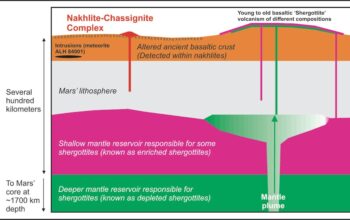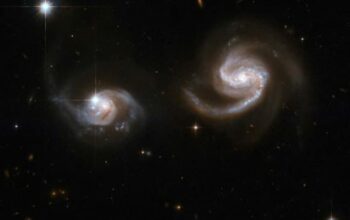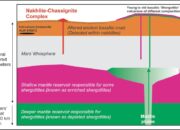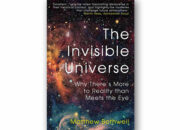Satellite galaxies, the diminutive companions of their larger galactic counterparts, have become a subject of immense interest in contemporary astrophysics. These entities, orbiting massive galaxies, might hold profound implications for our understanding of gravitational dynamics, particularly in the context of modified gravity theories. Modified gravity frameworks, which posit alterations to general relativity, aim to elucidate phenomena such as dark matter and cosmic acceleration. As researchers delve into the peculiarities of satellite galaxies, the notion arises: do these celestial whispers signal the necessity for modifications in our gravitational paradigms?
First, it’s essential to comprehend the structure and behavior of satellite galaxies. Typically, these galaxies exhibit binding energies that are significantly lower than their host galaxies. This discrepancy leads to questions regarding their formation, evolution, and the gravitational forces at play. Classical Newtonian mechanics states that the gravitational influence exerted by a host galaxy should govern the motion of its satellites. However, observational discrepancies often arise, suggesting that the visible mass is insufficient to account for the gravitational interactions observed.
In standard cosmological models, dark matter serves as the primary explanation for the mass discrepancies witnessed in spiral galaxies and their satellites. The Lambda Cold Dark Matter (ΛCDM) model has prevailed in explaining a wide array of cosmic phenomena, including the large-scale structure of the universe and cosmic microwave background radiation. However, this paradigm encounters challenges when confronted with the kinematics of satellite galaxies, where the predicted behaviors deviate from actual observations. This has led to an exploration of modified gravity theories, such as Modified Newtonian Dynamics (MOND) and its relativistic extensions, like Tensor-Vector-Scalar (TeVeS) gravity.
MOND posits a modification of Newton’s laws at low accelerations, which prevail in the outskirts of galaxies, including those of satellite galaxies. Under this paradigm, the acceleration due to gravity does not relate linearly to mass, thereby permitting satellite galaxies to possess a higher degree of stability and coherence despite their apparent mass deficiencies. This alteration challenges the convention of gravity’s interaction and presents a compelling case for considering gravitational modification as a viable explanation for satellite galaxy dynamics.
Recent studies have sought to test these hypotheses by diving deep into the intricate dynamics of satellite galaxies. By employing high-resolution simulations, astrophysicists examine the orbits and distributions of these galaxies around their hosts. For instance, radial profiles and velocity dispersions provide crucial insights into the gravitational binding of these satellite systems. In scenarios governed by modified gravity, satellite galaxies might exhibit distinctive clustering patterns or aberrant velocity distributions that stand in stark contrast to predictions made under the ΛCDM paradigm.
Moreover, the distribution of satellite galaxies around their parent galaxies is a rich subject for investigation. According to the standard model, one might expect these satellite galaxies to present a relatively isotropic orbital distribution. However, observed anisotropies indicate a complex interplay between gravitational dynamics and environmental factors. Enhanced satellite retention or ejection processes in modified gravity contexts could yield distinctive spatial configurations, transforming the landscape of galactic interactions.
In conjunction with their orbital dynamics, the mass-to-light ratios of satellite galaxies serve as another critical indicator of gravitational behavior. Standard models predict that these ratios should yield consistent values, dictated by the host galaxy’s mass. Yet discrepancies have been alluded to in various observations, prompting inquiries into whether these galaxies’ interactions with their host lead to feedback mechanisms amplifying altered gravitational effects. Consequently, assessing satellite galaxies’ luminosity profiles may further elucidate the ongoing discussion surrounding modified gravity.
The exploration of satellite galaxies extends beyond mere orbital dynamics. It also dovetails with the broader frameworks of cosmological evolution. Understanding whether satellite galaxies conform to their predicted structures in modified gravity could yield insights into the very nature of cosmic evolution itself. If indeed satellite galaxies whisper of a modified gravitational framework, they could potentially alter our comprehension of cosmic history, proposing changes to cold dark matter’s prevalence in our universe.
The significance of observational evidence underpinning the modified dynamics of satellite galaxies cannot be understated. Anomalous gravitational behaviors exhibited by such galaxies may prompt astrophysicists to reevaluate gravitational constructs altogether. As data collection techniques become more sophisticated, and as telescopes acquire increased sensitivity, the empirical study of these galaxies will pave pathways to uncover deeper truths about the underlying principles governing cosmic phenomena.
In conclusion, the inquiry into whether satellite galaxies whisper of modified gravity is not merely an academic exercise; it represents a frontier in the quest for knowledge about the universe’s fundamental mechanics. While multitude hypotheses coexist and the empirical data continues to amass, the observations of satellite galaxies challenge conventional wisdom and extend an invitation to rethink the gravitational laws that have governed our comprehension of the cosmos. Thus, as the dialogue between dark matter and modified gravity endures, the peculiar orbits and dynamics of satellite galaxies serve as a tantalizing window into understanding gravitation in all its multifaceted glory.












